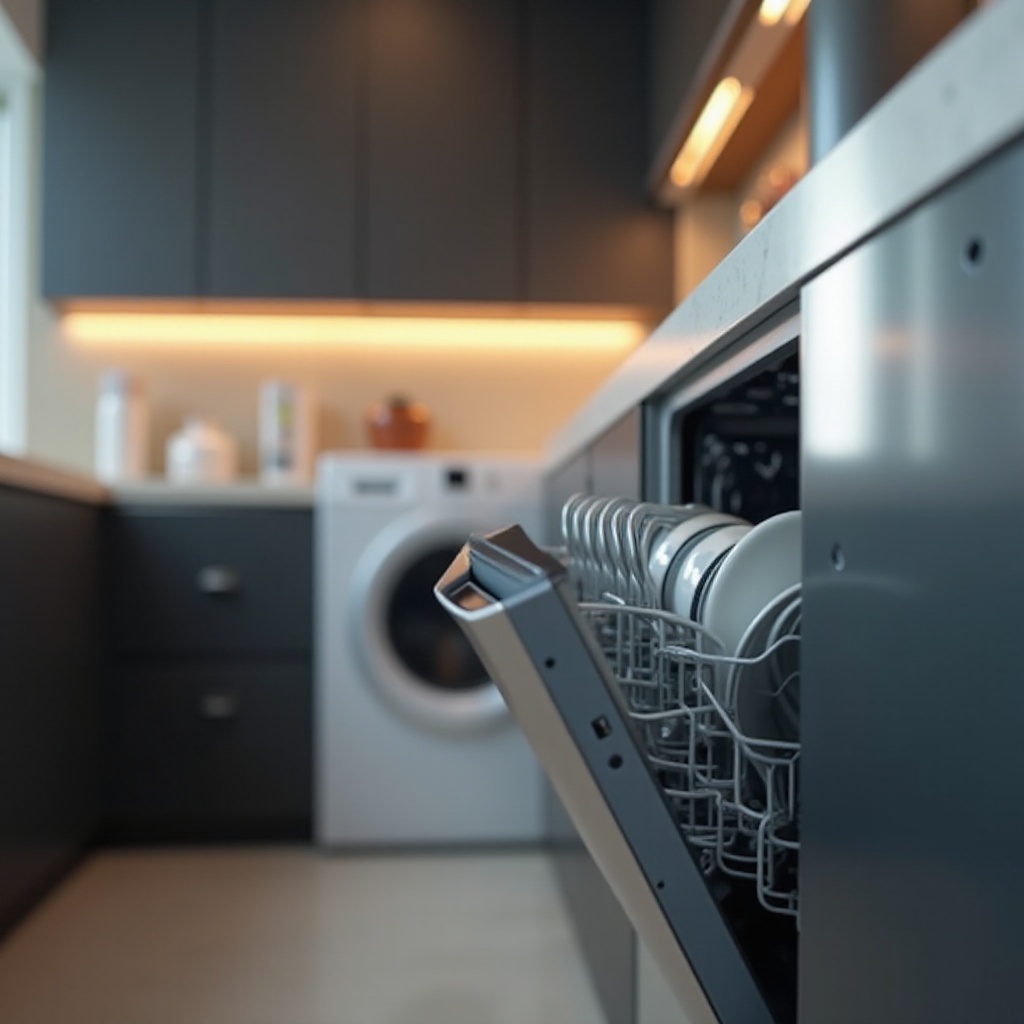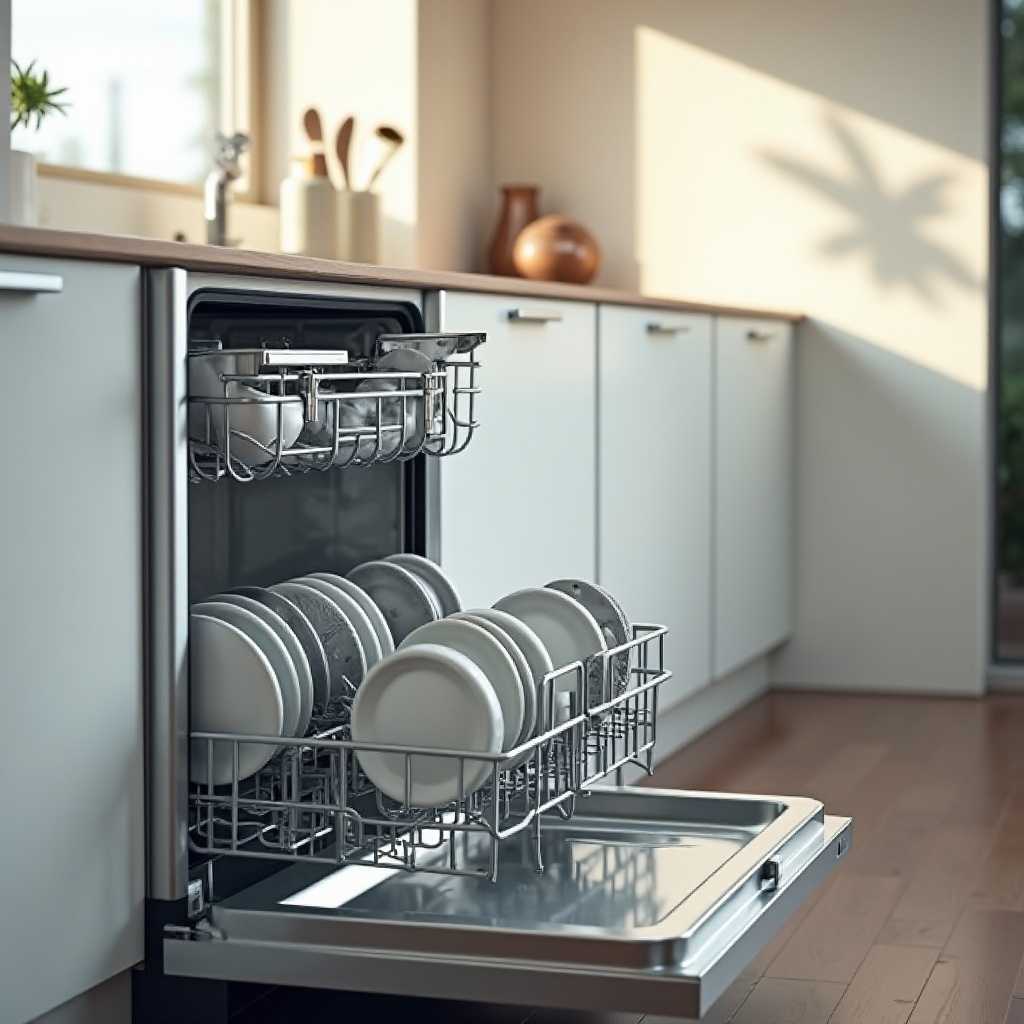Introduction
When your dishwasher stops working, it can throw your daily routine into chaos. Figuring out the problem is essential to restoring normalcy and keeping your kitchen running smoothly. In this guide, we'll tackle common dishwasher issues and provide detailed solutions to help you pinpoint and fix problems efficiently. Let's get started with troubleshooting.

Checking the Power and Connections
Start by addressing the basics when your dishwasher malfunctions. Often, the cause can be linked to simple power or connection issues.
'Ensuring the Dishwasher is Plugged In:' Examine whether the dishwasher is securely connected to the power outlet. Vibration or inadvertent movement can loosen the plug, so double-check and plug it firmly back in.
'Inspecting the Circuit Breaker:' Check your home's electrical panel for tripped circuit breakers. If you spot one, reset it manually. This can sometimes resolve the issue if a surge or overload occurred.
'Secure Electrical Connections:' A thorough inspection of the power cord for any signs of damage like cuts or fraying is necessary. Replace any damaged cords to ensure safe and effective operation.
With electrical sources verified, examine the water supply next, as both are crucial for a functioning dishwasher.
Water Supply Issues
An uninterrupted water supply is critical for dishwashing. Interruptions in flow can lead to poor performance or a non-start.
'Verifying the Water Valve is Open:' Confirm the water supply valve is fully open. It resides typically beneath the sink and might occasionally be partially closed, limiting water availability.
'Inspecting the Water Supply Line:' Investigate for any kinks or bends in the supply line that may impede water flow and correct them as needed.
'Dealing with Float Switch Problems:' The float switch is pivotal in preventing overfilling. Ensure it moves freely without obstruction. Replacement might be needed if it's stuck.
After resolving water supply concerns, focus on cleaning and maintaining certain dishwasher parts for optimal performance.
Cleaning and Maintenance
Consistent cleaning and maintenance are key to a dishwasher's efficiency and longevity.
'Cleaning Clogged Filters:' A routine filter check and clean-up will prevent water drainage issues. Remove the filter and flush it with hot water to remove any blockages.
'Inspecting and Maintaining Spray Arms:' Ensure spray arms rotate well and are free from debris. Use a small brush or toothpick to unclog the spray holes.
'The Importance of Regular Cleanings:' Regular maintenance cycles using cleaning solutions help prevent buildup. Running an empty wash with these solutions maintains cleanliness and efficiency.
Once maintenance steps are integrated into your routine, look into mechanical issues, which sometimes underlie operational failures.

Mechanical Problems
Mechanical issues typically involve malfunctioning parts and may necessitate repair or replacement.
'Faulty Dishwasher Door Latch:' An improperly closing door latch can prevent your dishwasher from starting. Inspect for damage and replace if needed.
'Diagnosing and Replacing Faulty Motors:' If other steps don't resolve the issue, the motor could be faulty. Listen for unusual noises and call a technician if necessary.
'Spray Arms Not Spinning:' Motor or pump issues can restrict spray arm movement. Seek professional evaluation if cleaning doesn't help.
With mechanical diagnostics complete, consider your detergent and loading strategies to avoid repeat issues.
Detergent and Loading Issues
Correct use of detergent and effective loading methods are crucial for consistently clean dishes.
'Correct Loading Practices:' Ensure the detergent dispenser isn't blocked and that spray arms have sufficient room for movement by not overloading the dishwasher.
'Choosing the Right Detergent:' Use a detergent compatible with your dishwasher model. Some brands recommend specific types that optimize performance.
Finally, addressing noise complaints can eliminate distractions in a peaceful home environment.
Noisy Dishwasher Solutions
Noisy dishwashers can indicate underlying issues that need attention.
'Identifying Noise Sources:' Pinpoint where the noise originates. Common culprits include the motor, spray arms, and loose parts.
'Lubricating Moving Parts:' Apply lubricant to hinges and wheels to reduce friction and eliminate noise.
After addressing noise and other issues, we can conclude our troubleshooting journey.

Conclusion
Troubleshooting dishwashers involves checking everything from power connections to mechanical parts. With vigilance, many common issues can be resolved without professional help. Should these solutions fail, consulting a professional is recommended to prevent further complications.
Frequently Asked Questions
Why is my dishwasher not draining?
Several issues could cause drainage problems, including clogged filters or a blocked drain hose. Regular maintenance and cleaning help prevent such issues.
How often should I clean my dishwasher filter?
Cleaning the filter monthly helps ensure optimal performance. Build-up and clogs can impede water drainage, affecting the dishwasher’s cleaning ability.
Is it worth repairing an old dishwasher?
Generally, repair is worth considering if the dishwasher is under ten years old and the repair cost is less than half the price of a new appliance. Otherwise, replacement might be more economical.
